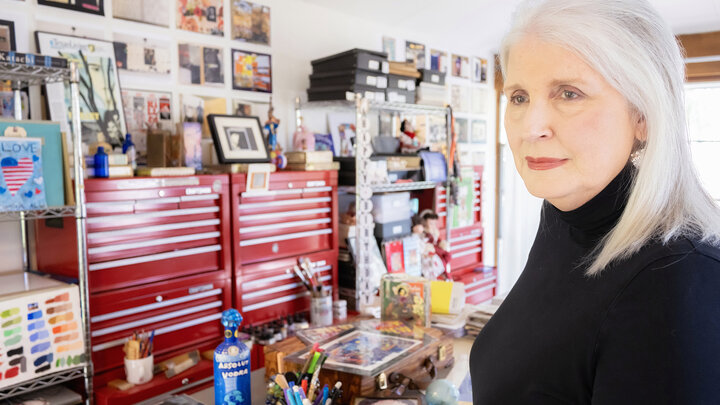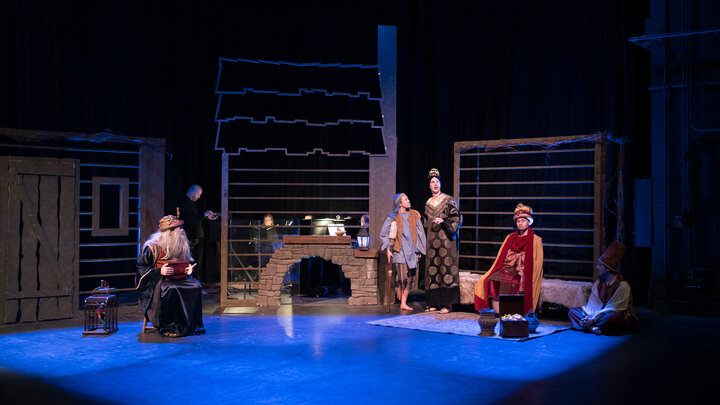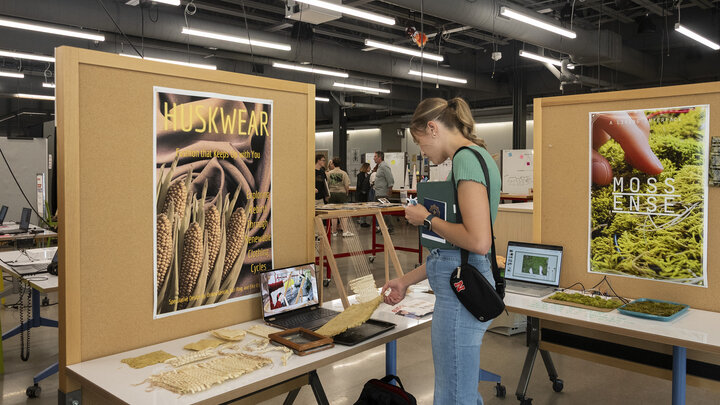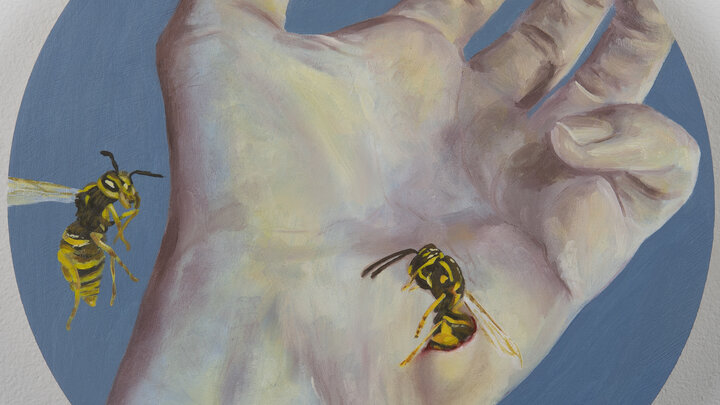Lincoln, Neb.--The thoughts, life, and creative process of an artist are revealed to the public in “The Muck, the Seeds, the Weeds, the Blossoming: The Journals of Karen Blessen,” an exhibit that features 24 of Karen Blessen’s journals recently donated to the University of Nebraska–Lincoln Libraries Archives & Special Collections.
Opening on Sept. 18, and running through February 2026, this exhibit is the first time her journals will have gone on display. The exhibit is located on the second-floor link of Love Library and is accessible during the hours Love Library is open (https://libraries.unl.edu/hours/).
“We are deeply honored and grateful to receive this generous donation from a Pulitzer Prize–winning artist and UNL alum. Karen’s materials are more than a gift—they are a gateway for students, scholars, and readers to engage with journaling, the visual process, and art and memoir at its highest level,” said Richard Graham, chair of Teaching Partnerships at UNL Libraries. “This unique collection offers insight into the creative process and spirit and will inspire creativity and meaningful dialogue for generations to come.”
Born and raised in Columbus, Nebraska, Blessen (B.F.A. 1973) graduated from the University of Nebraska–Lincoln and became an artist, writer and freelancer for 10 years before working at the Dallas Morning News (DMN) from 1984 to 1989. While at the DMN, Blessen became the first graphic artist to win a Pulitzer Prize (1989) as part of a story team that produced the special section “Anatomy of an Air Disaster: The Final Flight of 50 Sierra Kilo,” which explained why the airliner crashed.
In 2005, she founded 29 Pieces, an arts organization based in Dallas, Texas, and she serves as its executive artistic director. 29 Pieces developed an arts-based curriculum, “Artists Making a Kinder World,” which is used by more than 1,500 teachers in 24 states and Washington, D.C.
Blessen’s journaling began after graduation and by 2025 her consistent practice had produced more than 155 journals. In May of this year, she donated 25 of the journals, ranging in date from 2013 to 2022, to Archives & Special Collections.
“It was an intuitive decision and need. I wanted them to be preserved,” Blessen explained.
Blessen was also interested in exhibiting them to inspire students to carry on the same practice. She has no qualms about openly revealing her soul, as the journals tell her story, but she has redacted parts that refer to other people.
“They [the journals] tell the good, the bad, and the ugly. They talk about my artistic life. They talk about my personal life, and they talk a lot about how I strategize to get through these real gut punches, the times that are hard, and how I don't get too elated when something wonderful happens. The journals have given me a way to chart my path,” said Blessen.
The gardening metaphor apparent in the exhibit theme is deliberate.
“I'm a gardener, and the metaphor of gardening has directed my artistic life and my life as a leader of a nonprofit arts organization,” explains Blessen. “There's so much to learn from nature as far as lessons in symbiosis, in mutualistic relationships, in tolerance and patience.”
The team working on the exhibit with Blessen includes Camilo Sanchez, the curator of exhibitions at the International Quilt Museum. Blessen recruited Sanchez with a cold call after being impressed with his exhibit designs and the typography he uses for the museum’s exhibits.
Sanchez says that his job is “to bring the ideas down to reality.” He met with the Libraries Exhibit Committee and visited possible spaces within Love Library, assessed the supplies needed, determined where to position the cases, did the graphic design, and installed the exhibit.
In the cases, the journals will be open to pages that Blessen selected, and both she and Graham worked on the labels.
Blessen mentioned that exhibit visitors will encounter a couple things she does while journaling, including pages that show where she poses a question and then writes the answers using both hands to activate different parts of the brain. The second thing to look for throughout the journals is the persistent Jesus Prayer, which Blessen says serves several purposes.
“It's an ancient prayer that I say or write a lot. ‘Lord Jesus Christ, Son of God, have mercy on us,’ or ‘have mercy on me,’” explained Blessen. “It serves the purpose of connecting me with the divine name in a very speedy way. It also, I feel, connects me with the millions of people who have said that specific prayer throughout the last centuries.”
The public is invited to the opening reception set for Thursday, Sept. 18 from 5:00-6:30 p.m. This exhibit is a signature event of the Pages to Paths: A Celebration of Our Libraries initiative to celebrate our history, raise awareness and co-create the future of the University of Nebraska–Lincoln Libraries with our communities. To learn more about Pages to Paths, visit https://go.unl.edu/pf9y.



